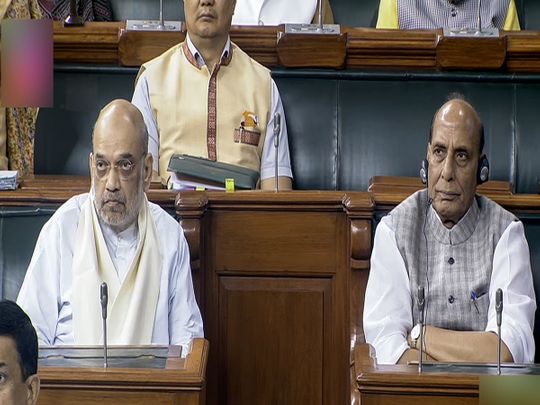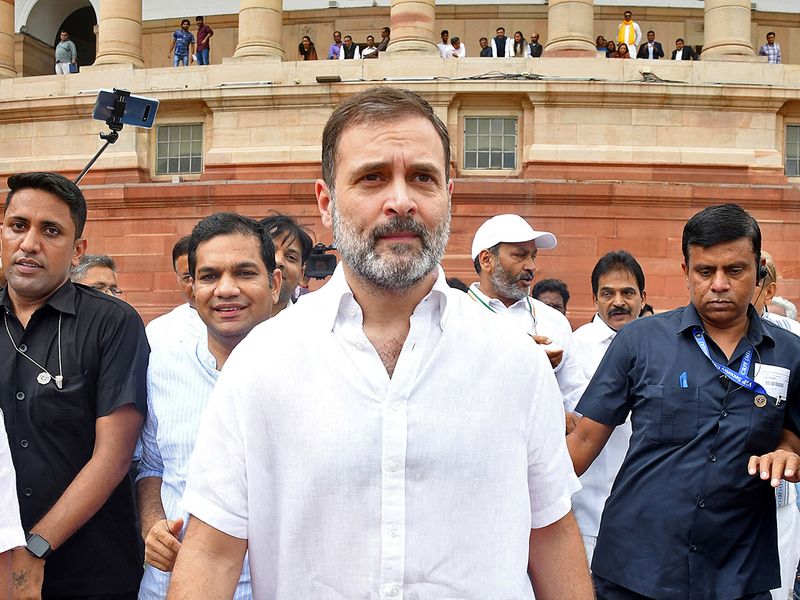
In the Indian parliamentary system, any Lok Sabha (Lower House) member of parliament, who has the support of at least 50 other members of the house, can introduce a vote of no-confidence against the government. It must be noted, however, that such a vote is against the council of ministers, not the prime minister.
This point is pertinent because the present vote of no confidence against the Bharatiya Janata Party (BJP) led National Democratic Alliance (NDA) government has been directed mostly at Prime Minister Narendra Modi. Modi is expected to reply today, that is August 10, to the motion.
Initiated on July 26, this no-confidence motion, which has been ongoing since Aug. 8, is sure to be defeated. Why? Because the BJP has overwhelming numbers. They are likely to muster about 350 votes in their own favour in the 553-member house. In fact, a no-confidence motion has unseated no government in India.
Since India became a republic in 1950, all the 27 no-confidence motions against governments in power have been defeated. In one instance in 1979, the Morarji Desai government resigned before the voting began because they did not have the numbers.
Modi is likely to take the opposition to cleaners, accusing them of corruption, lack of unity, anti-India activities, and compromising national security, among other strictures, later today. The polarisation in Indian politics is only going to worsen, even as this no-confidence motion comes to naught
BJP's A-team
When it comes to this Modi-led BJP government, they are also known for their fiercely effective parliamentary interventions.
The A-team led by Modi himself, has stalwarts such as the number two in the government, Home Minister Amit Shah, Defence Minister Rajnath Singh, Finance Minister Nirmala Sitharaman, Minister of Women and Child Development and Minister of Minority Affairs, Smriti Irani, Minister of Sports, Youth Affairs and Minister of Information and Broadcasting, Anurag Thakur, and whole slew of excellent speakers and presenters.
They come well prepared and usually make mincemeat of the opposition. In this case too, when Modi takes the floor, he is likely to turn tables and steal a march over his bitterest critics and opponents.
Attacking the Prime Minister
In other words, the opposition has neither the numbers nor the firepower to take on the Modi government. If the conclusion is foregone, what is the purpose of such an antigovernment move? The answer is simple. The opposition alliance, I.N. D. I. A, consisting of 26 parties, wants to show its unity and train its guns against Modi himself. General elections are due next year, in 2024.
The opposition wishes to demonstrate that it has the resolve and the issues to be taken seriously. Moreover, during a no-confidence motion, much more time is given to make arguments and counterarguments than in the discussion on a normal bill or during question hour. This affords the opposition to make its case forcefully against the ruling regime.
This particular no-confidence motion was also marked by the presence — or should we say re-entry — of Rahul Gandhi (RaGa) to the Lower House. He had been convicted by the courts in Gujarat on the charge of criminal defamation, thus removed from parliament and debarred from running for eight years.
The Supreme Court of India recently stayed his conviction, which had been upheld by the Gujarat High Court. This allowed his return to the Lok Sabha on Monday. Two days later, on Wednesday, he made his opening speech in the no-confidence motion by attacking not so much the government as Modi himself.
I heard his speech, which was televised and is easily available on social media. It was interrupted by much heckling, jeering, and back-and-forth hooting between the treasury and the opposition benches. To someone unfamiliar with Indian democracy, it would be an unseemly experience.
Of course, we have seen worse in the past, with papers and other items thrown about, members crowding into the well of the house, being forcibly evicted, and resorting to “unparliamentary language,” slogan shouting, even abuse, which had to be expunged. It is little solace to point to other democracies, some right next to ours, where parliamentarians have behaved worse, even coming down to fisticuffs.

Arrogance and hubris
Though Gandhi spoke neither eloquently nor persuasively, being at a natural disadvantage in Hindi, a language that he does not command as well as English, he was brutally unsparing when it came to Modi. In two minutes, between 12:42 and 12:44 on Aug. 9, he lashed out: “You killed the voice of India in Manipur, Bharat Mata was murdered in Manipur”; “You killed the people of Manipur, you killed India in Manipur, that is why you PM cannot go to Manipur”; “You are not the protector of Bharat Mata, you are her killer”; “You are antinational, you are a traitor.” While the other members of the opposition alliance, whose acronym is I.N. D. I. A, were not so pointed or extreme, they did attack Modi for what they alleged was his arrogance and hubris.
These are desperate, one might even say, reckless remarks Gandhi. Already, the attacks against him from the treasury benches have come in thick and fast. Modi is likely to take the opposition to cleaners, accusing them of corruption, lack of unity, anti-India activities, and compromising national security, among other strictures, later today. The polarisation in Indian politics is only going to worsen, even as this no-confidence motion comes to naught.
But if the present bare-knuckle combat between the government and the opposition is anything to go by, we are in for a battle royale in the months to come. Next years’ general elections in India promise to be all out battle, a political Kurukshetra so to speak, with both the government and the opposition pulling out all the stops. As the debate on this no-confidence motions shows, the gloves are already off.









